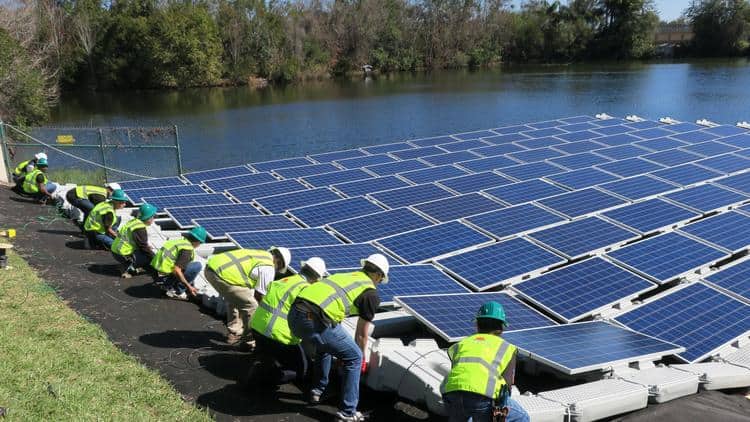In this article, we will cast light upon how to choose desirable sites for the installations of floating photovoltaic projects. The following are the main factors we should take into account: relevant requirements of government sectors, light resources, surrounding environment (shading, runoff velocity, wind speed, icing, depth of water, etc.), impact on ecological environment, grid connection and dispatch of power plants, requirements for navigation, and construction conditions.

1. Government Planning
Selected sites should accord with relevant requirements set by government sectors. For instance, it is necessary to consider whether they comply with the requirements of departments of planning, land, environmental protection, forestry, cultural relics, and water resources. To be specific, the Department of Planning needs to make sure the sites suit urban planning and they will not pose a threat to other planning in the region. The Department of Land needs to guarantee that land status of the sites meets the standards of relevant policies. And the Department of Forestry needs to determine whether the sites are located in national nature reserves. The Department of Cultural Relics shall ensure they will not impact preservation of cultural relics underground or underwater. The Department of Environmental Protection shall confirm whether the construction sites meet the standards of environmental impact assessment (EIA). Lastly, the Department of Water Resources shall verify that the sites live up to the requirements for getting water and drainage.
2. Light Resources
More often than not, floating PV projects are installed on inland lakes, man-made reservoirs and ponds with rich solar resources and a large area. If the select sites are located in the southern part of China, there should be an annual solar radiation of more than 1300 kWh/(m²·year); if in the northern part, there should be more than 1400 kWh/(m²·year). And it is necessary to conduct a comprehensive analysis on the price of electricity and the construction costs in different regions to make a decision.
3. Surrounding Environment
The selected sites should not be surrounded by trees, mountains, buildings and other things that may shade the floating PV modules so that power generation will not be affected. The surrounding area may as well feature stable surface run-off, normal wind speed, few water level fluctuations, no severe weather like typhoons, hurricanes or rainstorms and no icing in winter. Such being the case, floating PV modules will not collide with each other because of strong flow of water; they will not be moved by the effect of wind load and can reduce the force of floating tie rods and anchoring ropes; the floating modules will also not tilt resulting from water level changes; what's more, there will be no heavy weather causing damage to the floating body, modules and other equipment; and last but no least, no icing in winter means that the floating devices will not be negatively influenced by ice.
4. Ecological Environment
Floating solar farms are required to be not located in notified ecologically sensitive areas (ESAs), and can not pose a threat to fishes and flora in water. They should not be located in areas where drinking water is available, which ensures that surrounding residents and animals can drink clean and safe water. Apart from that, under no circumstances can they impact the work and life of the residents, as downstream water, industrial water and water used for surrounding crop irrigation are free from negative influence of floating solar farms.

5. Grid Connection and Dispatch of Power Plants
It is necessary to collect relevant information on grid access and power dispatch. Floating solar photovoltaic projects are generally located in inland lakes and reservoirs, which are close to residential areas. If conditions permit, it is advisable to directly power nearby residents and factories so that loss in transmission can be reduced.
6. Requirements for Navigation
To select a desirable site, it is also necessary to find out whether there are ship docks or wharves nearby, and figure out the depth, width, turning radius, permitted flow rate, and specified water corridors of the channels.
7. Construction Conditions
Besides, the traffic conditions in the vicinity, primarily the transportation conditions of cables, floating PV modules and building materials should be taken into account. And developers should confirm whether it is convenient to carry the floating construction equipment in the water areas, and consider the balance and safety of shipboard operation, and make sure ponds, dams and other facilities will not be damaged.
Site selection is mainly divided into two parts: firstly, to collect and analyze relevant information (policies, resources, nearby projects, etc.), estimate the cost, scale, power generation of your own project, and finally obtain the initial rate of return; secondly, to carry out field visits, including surrounding environment, construction conditions.
In recent years, the country vigorously promotes floating solar photovoltaic projects. With technological advances and large-scale floating PV projects coming into light, their advantages will be highlighted. Therefore, a good site for installing the projects is indispensable for increasing power generation, reducing investment costs and improving efficiency. (Editor: Claire Jeawin)